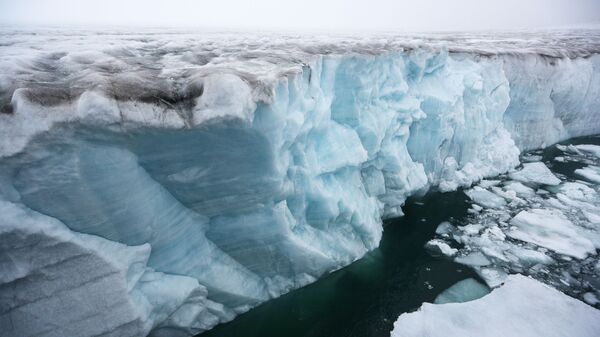According to the study, which was published Monday in the journal Nature Geoscience, around 20% of the Arctic region is vulnerable to abrupt thawing of its permafrost layer. Merritt Turetsky, the lead author of the study, described abrupt thawing to Phys.org as “fast and dramatic, affecting landscapes in unprecedented ways.”
Permafrost is defined as ground, which can include rock or soil, that remains at or below the freezing point of water (0 degrees Celsius) for two or more years. According to current estimates, permafrost contains about 1.5 trillion metric tons of carbon because it often holds “remains of life” such as dead plants, animals and microbes that contain carbon, Phys.org explains. When permafrost quickly thaws, it releases large amounts of carbon dioxide and methane, which both contribute to global warming.
"Forests can become lakes in the course of a month, landslides occur with no warning, and invisible methane seep holes can swallow snowmobiles whole,” Turetksy added, also noting that abrupt permafrost thaws can cause ecological shifts. "Systems that you could walk on with regular hiking boots and that were dry enough to support tree growth when frozen can thaw, and now all of a sudden these ecosystems turn into a soupy mess.”
Abrupt thawing in the Arctic occurs in an erosional process called a thermokarst. According to a 2015 paper published in the journal Developments in Earth Science Processes, “Thermokarst features are topographic depressions created in a variety of shapes and sizes as a result of thawing ground ice. Thermokarst is present in areas where the thermal equilibrium has shifted, allowing for the thaw of ground ice.”
Using numerical models to predict future abrupt thaw carbon losses, the researchers found that thermokarst can cause flooding, inundation or landslides. Current climate change models mostly include gradual permafrost thawing estimates. When the researchers included abrupt thawing estimates in their models, they found that the predicted carbon releases from the process were much higher than in previous simulations.
"The impacts from abrupt thaw are not represented in any existing global model, and our findings indicate that this could amplify the permafrost climate-carbon feedback by up to a factor of two, thereby exacerbating the problem of permissible emissions to stay below specific climate change targets," David Lawrence, a coauthor of the study, is quoted as saying, Phys.org reported.



